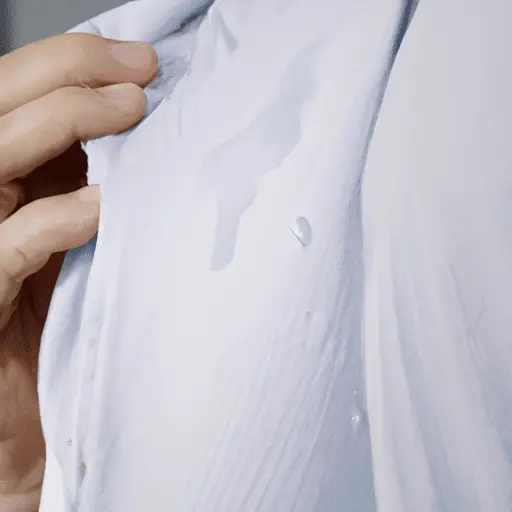Understanding Hyperhidrosis
-
Table of Contents
- Understanding Hyperhidrosis
- Key Takeaways
- Introduction: Unveiling Hyperhidrosis
- Understanding the Types and Causes of Hyperhidrosis
- The Impact of Hyperhidrosis on Quality of Life
- Treatment Options for Hyperhidrosis
- FAQ Section: Answering Common Questions About Hyperhidrosis
- 1. What triggers hyperhidrosis?
- 2. Can hyperhidrosis be cured?
- 3. Is hyperhidrosis a sign of an underlying health condition?
- 4. Can lifestyle changes help manage hyperhidrosis?
- 5. Is surgery a good option for treating hyperhidrosis?
- Conclusion: Demystifying Hyperhidrosis
- Key Takeaways Revisited
Understanding Hyperhidrosis

[youtubomatic_search]
Key Takeaways
- Hyperhidrosis is a medical condition characterized by excessive sweating, affecting approximately 3% of the population.
- There are two types of hyperhidrosis: primary and secondary, each with different causes and treatments.
- Hyperhidrosis can significantly impact a person’s quality of life, leading to social, emotional, and occupational challenges.
- Various treatment options are available, ranging from topical treatments to surgical interventions.
- Early diagnosis and treatment can help manage symptoms and improve the quality of life for those living with hyperhidrosis.
Introduction: Unveiling Hyperhidrosis
Hyperhidrosis, commonly known as excessive sweating, is a medical condition that affects approximately 3% of the population. Despite its prevalence, it remains a largely misunderstood and underdiagnosed condition. This article aims to shed light on hyperhidrosis, its causes, types, impact on individuals, and available treatment options.
Understanding the Types and Causes of Hyperhidrosis
Hyperhidrosis is categorized into two types: primary and secondary. Primary hyperhidrosis is often idiopathic, meaning its cause is unknown. It typically begins in childhood or adolescence and is localized to specific areas such as the hands, feet, underarms, or face. On the other hand, secondary hyperhidrosis is usually a symptom of an underlying health condition or a side effect of certain medications. It often involves generalized sweating all over the body.
The Impact of Hyperhidrosis on Quality of Life
Hyperhidrosis can significantly impact a person’s quality of life. Excessive sweating can lead to social embarrassment, emotional distress, and occupational difficulties. According to a study published in the Archives of Dermatological Research, nearly 75% of hyperhidrosis patients reported that the condition negatively affected their social life, mental health, and work productivity.
Treatment Options for Hyperhidrosis
Various treatment options are available for hyperhidrosis, ranging from topical treatments to surgical interventions. Topical treatments, such as antiperspirants containing aluminum chloride, are often the first line of treatment. If these prove ineffective, oral medications, iontophoresis, Botox injections, or even surgery may be considered. The choice of treatment largely depends on the severity of the condition and the patient’s response to initial treatments.
FAQ Section: Answering Common Questions About Hyperhidrosis
1. What triggers hyperhidrosis?
Triggers for hyperhidrosis can vary from person to person. Common triggers include heat, stress, physical activity, and certain foods or drinks.
2. Can hyperhidrosis be cured?
While there is currently no cure for primary hyperhidrosis, the condition can be effectively managed with the right treatment plan.
3. Is hyperhidrosis a sign of an underlying health condition?
Secondary hyperhidrosis is often a sign of an underlying health condition such as diabetes, thyroid problems, or certain types of cancer.
4. Can lifestyle changes help manage hyperhidrosis?
Yes, lifestyle changes such as wearing breathable clothing, avoiding trigger foods and drinks, and managing stress can help manage symptoms.
5. Is surgery a good option for treating hyperhidrosis?
Surgery is usually considered a last resort for treating hyperhidrosis and is typically reserved for severe cases that have not responded to other treatments.
Conclusion: Demystifying Hyperhidrosis
Hyperhidrosis, while a common condition, remains largely misunderstood. It is a condition that goes beyond mere physical discomfort, significantly impacting a person’s quality of life. Understanding the types and causes of hyperhidrosis, its impact on individuals, and the available treatment options is crucial for early diagnosis and effective management of the condition. With the right treatment plan, individuals with hyperhidrosis can lead a normal and fulfilling life.
Key Takeaways Revisited
- Hyperhidrosis is a common yet misunderstood condition characterized by excessive sweating.
- There are two types of hyperhidrosis: primary and secondary, each with different causes and treatments.
- Hyperhidrosis can significantly impact a person’s quality of life, leading to social, emotional, and occupational challenges.
- Various treatment options are available, ranging from topical treatments to surgical interventions.
- Early diagnosis and treatment can help manage symptoms and improve the quality of life for those living with hyperhidrosis.
[youtubomatic_search]


